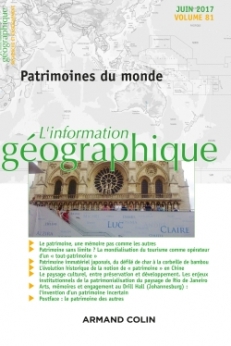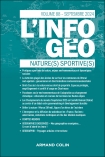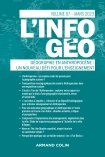
L'information géographique (2/2017)
Pour acheter ce numéro, contactez-nous
Recevez les numéros de l'année en cours et accédez à l'intégralité des articles en ligne.
Une partie de Rio de Janeiro est reconnue en 2012 comme patrimoine mondial de l’Unesco, en tant que paysage culturel. Les résultats d’une ethnographie institutionnelle permettent de saisir les modalités selon lesquelles la dimension patrimoniale d’un paysage peut être mobilisée dans les régimes discursifs des institutions impliquées. Puis, l’analyse de ces énoncés permet d’esquisser les contours de l’imaginaire de ces experts quant à la figure du paysage. L’intérêt porté aux différentes versions de ce « paysage culturel » d’une institution à une autre et aux rapports de force qui leur sont sous-jacents, permet de comprendre quelles sont les diverses acceptions du patrimoine se façonnant sur et par rapport à un territoire en transformation et la plasticité de la notion de patrimoine comme construction sociale circulant à travers différentes aires culturelles.
Part of Rio de Janeiro territories is recognized in 2012 as a cultural landscape on the Unesco World Heritage list. The results of an institutional ethnography allow us to seize the terms and conditions for the heritage dimension of a landscape to be mobilized in the institutions discourses. Thanks to the analysis of these statements it is then possible to sketch the outlines of the imagination of these heritage experts regarding the landscape figure. By paying attention to the variations of this "cultural landscape" from an institution to another on, and to the underlying balance of power, we offer to understand what are the multiple meanings of the heritage shaping on, with regard to a territory in transformation. Finally, this article propose to contribute to the reflections on the plasticity of the notion of heritage as a social construction circulating through various cultural areas.

